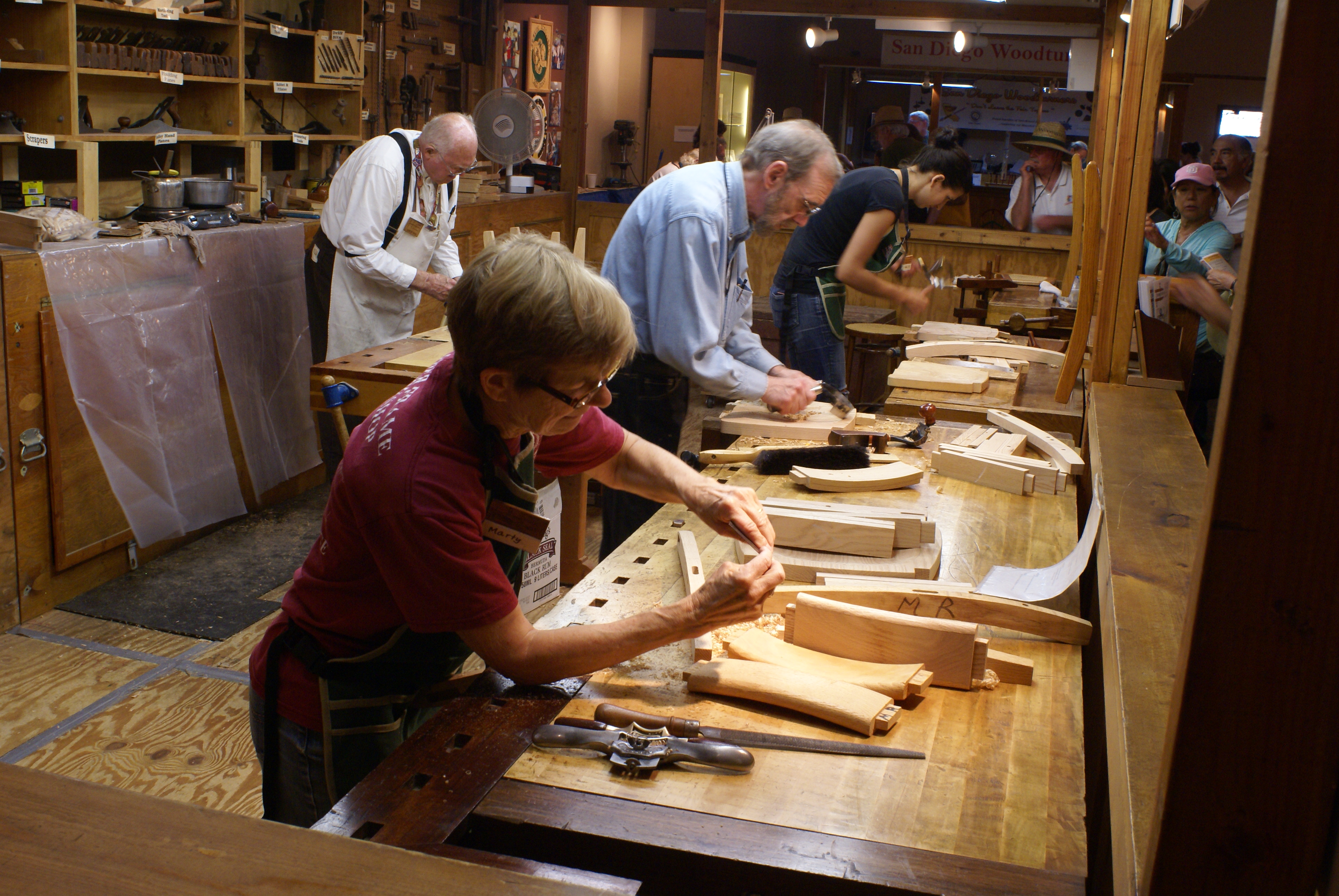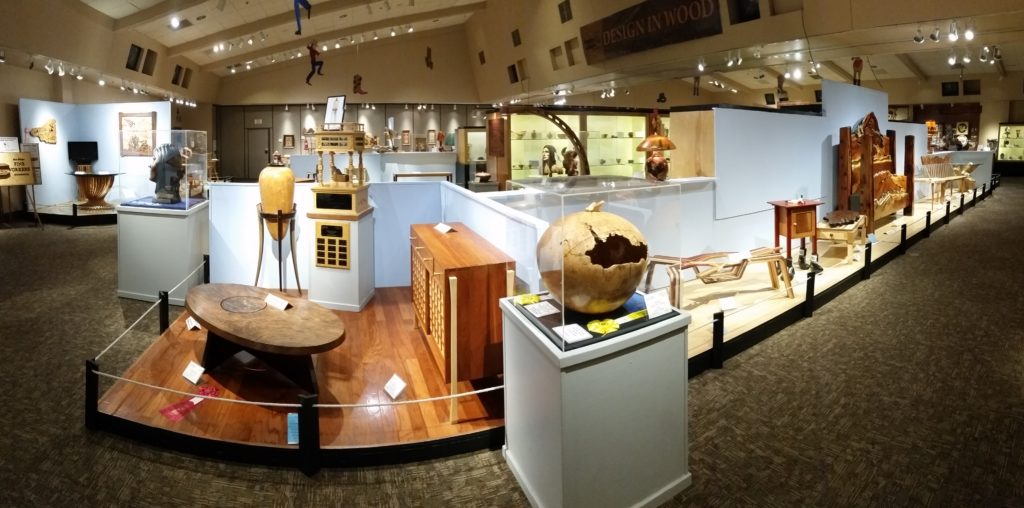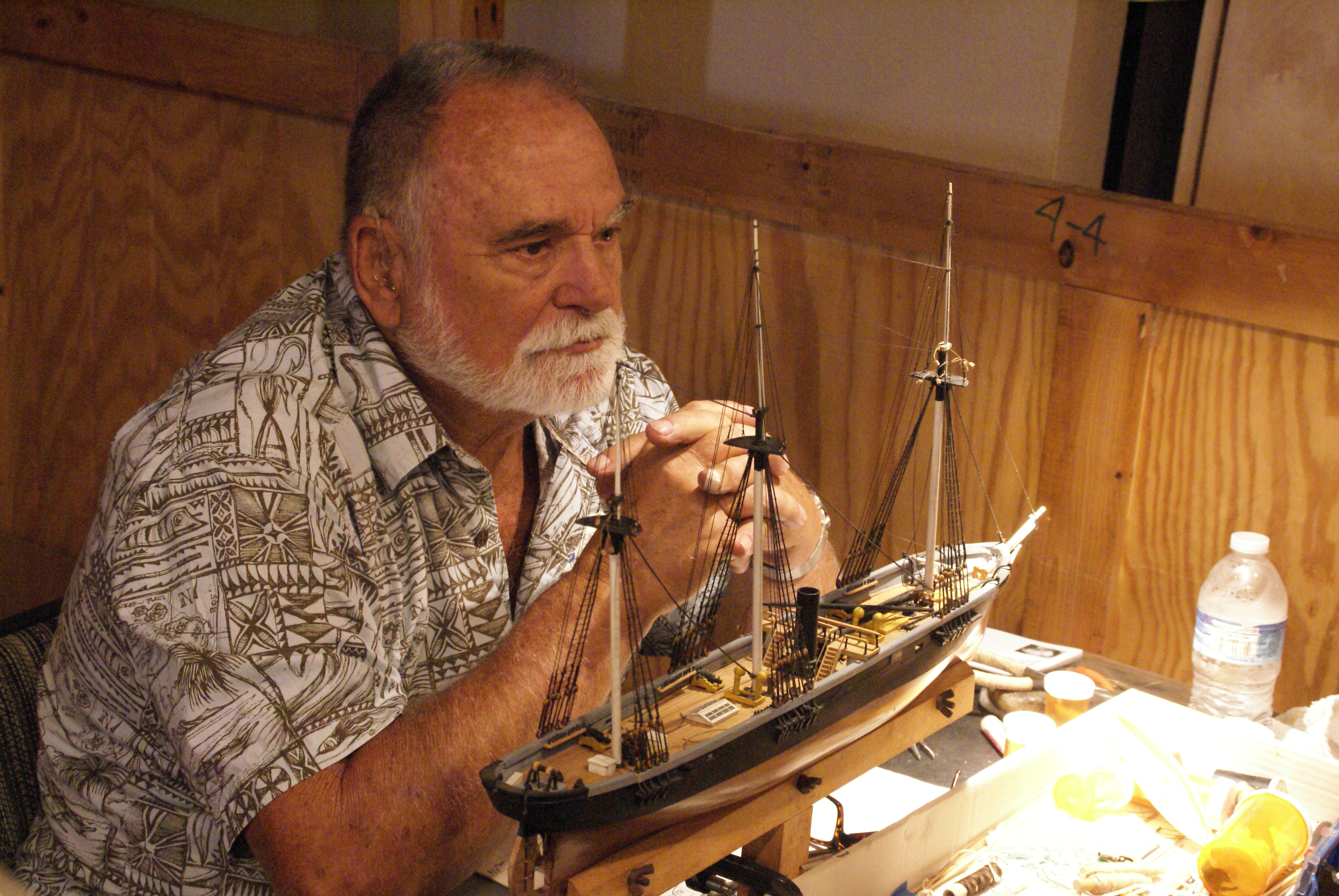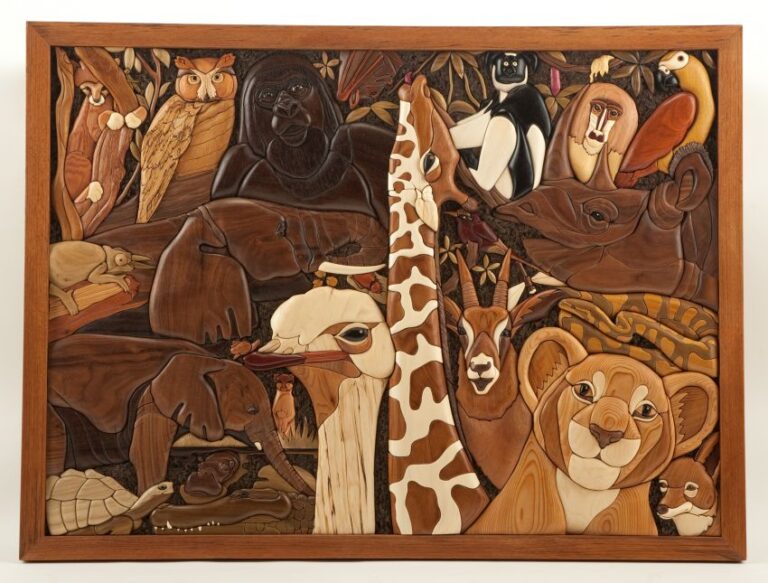Design in Wood (DIW) History Part 1 can be found here – https://sdfwa.org/history-of-the-design-in-wood-exhibition/
The growth of the Exhibition continued through Bob Stevenson’s tenure. Major awards by national woodworking magazines were added, and Bob contributed a display of antique woodworking tools which were used by his uncle. These are displayed in the 19th Century Cabinet Shop.

Traditional hand tool woodworking techniques are demonstrated throughout the Fair by members of the association – some in period dress. Each year these chair shop workers construct 50 or more child-sized oak chairs which are subsequently donated to charity organizations serving children. Application forms for donations to local non-profit organizations are accepted during the Fair. The Chair Shop foremen have included Bob Stevenson, Martin Ruch, Ed Gladney, Bob Bostick and Bill Thompson.
The number of entries increased to nearly 400 with prize money in excess of $15,000 per show. In 1997 DIW became an international exposition receiving entries from Canada and Mexico as well as many of the western states. There were now 19 classes of entries: Contemporary Furniture, Contemporary Accessories, Traditional Furniture, Traditional Accessories, Art Furniture, Made for Children, Model Build to Scale, Model Building not to Scale, Musical Instruments, Clocks, Veneering/Marquetry, Turning – Face Work, Turning – Center Work, Turning – Embellished/Mixed Media, Turning – Laminated/Segmented, Carving – Animals, Carving – Birds, Carving – Marine Animals, and Carving – Open. It’s fair to say that Pat Edwards generally initiated the activities that happen during the Design in Wood Exhibition, while Bob Stevenson is largely responsible for how DIW still looks today.




Photography and Lighting
After judging, all the first-place and special award winning entries are expertly photographed by Lynn Rybarczyk and Andy Patterson. A temporary studio is setup in the exhibition hall with seamless background and studio lighting. It’s usually a very long day taking all these pictures, however the publication quality, high-resolution images are subsequently made available to woodworking publications which continues to help promote Design in Wood. These are also posted on the SDFWA website for a visual history of SDFWA’s premier annual event.
An under-appreciated aspect of Design in Wood is lighting. Like most technical aspects of stagecraft or photography, it’s usually noticed only when something goes wrong. But when the Design in Wood exhibit transitions from flat ceiling lights to the show lighting, the display pieces just come to life. The early DIW shows were lit with clamp-on lights placed on the top of divider walls, and there was a mess of cords along with limited lighting angles. After DIW moved into the Mission Tower building, lighting tracks were installed on the ceilings, and Don Spangler devised a plan for lighting the exhibits that really shows off all the wonderful woodworking pieces.

The latest big improvement for DIW was replacing the halogen spotlights with high-tech LED lighting, which happened in 2015 when Jeff Bratt arranged for SDG&E to donate thousands of dollars worth of LED lamps to Design in Wood. This also eliminated the power restrictions on the number of lights the building electrical system could accommodate and made it possible to fully illuminate the large number of furniture pieces that have been exhibited in recent years.
Recent Years
In 2015 Ed Gladney took on the Design in Wood coordinator’s role, although Bob’s legacy will not be forgotten, as the Fair added the Bob and Janet Stevenson Award for Technical Excellence and Innovation – which Bob judges each year. Under Ed’s guidance, the Exhibition has continued to improve, adding new classes to accommodate the large number of furniture entries, and to showcase entries that embody the annual Fair theme – Mad About the Fair (Alice in Wonderland) was very popular in 2016.
Recent Design in Wood Exhibitions have received over 350 entries, and awarded over $20,000 in cash and merchandise as prizes in 26 different entry classes. The top awards like Best of Show boast $1000 prizes, which are a continuing draw for talented woodworkers both locally and across the US.



The Fair has supported the Design in Wood Exhibition over the years – recognizing that it is a prestigious draw for Fair attendance. In 2019 Design in Wood was listed in their survey as the third most popular reason people visit the Fair – right up there with concerts, rides, and deep-fried food. Due to the COVID19 pandemic, the San Diego County Fair – and Design in Wood were not held in either 2020 or 2021. We eagerly look forward to their return in 2022.
Volunteers and Staff
Staging an exhibition of this size is a huge undertaking and involves around 300 people from both SDFWA and other local woodworking Guilds. Planning starts months before the show opens and SDFWA coordinates with the Fair staff for the year’s theme, scheduling, and the processing of all the entries. The Fair supplies the facilities – a 7500 sq.ft. exhibition hall and storage for the three semi-trailers worth of display fixtures and equipment that make up the exhibit “furnishings”. The DIW staff and lots of volunteers set up everything to get Design in Wood ready to accept the year’s amazing woodworking. Then a small army of volunteers runs all the demonstration booths and watches over the exhibits for the whole month of the Fair. We all do it to share our love of woodworking with the fair-goers.
Public Outreach and Other Guilds
The live demonstration booths are part of our public outreach promoting woodworking. A variety of different activities are on display all day long. In addition to the chair shop, the carvers demonstrate all kinds of carving; the model ship builders from the SD Maritime Museum show their exquisitely detailed ship models, the SD Woodturners make hundreds of colorful wooden tops and turned pens that are available for a donation. Some days we have a chair caner working in the shop. And the Seaside Scrollers and Regular Cutups make scroll-sawed toys that are quite popular with children who come through DIW.

Also offered during the day are docent tours of the exhibit – offering insights into how the how the entries are made, background stories about the pieces displayed, and and how the judging process works. In the evenings the musical instrument makers take over the chair shop and demonstrate the particular tools and skills used for working wood to make violins, guitars or other instruments. All these demonstrators volunteer their time for the month that the Fair runs to share their talents with fair-goers.





Exhibition Impact
Design in Wood Exhibition is visited by several hundred thousand fair-goers each year and has inspired woodworkers both young and old. The displays and demonstrations serve to generate interest in all aspects of woodworking and – along with the prizes awarded – also provide exposure and potential sales to the artisans who enter and display their work. Additionally this exhibition has inspired other woodworking guilds to stage their own woodworking shows, which has further enriched and strengthened the national woodworking community.
Jeff Bratt
SDFWA Historian

